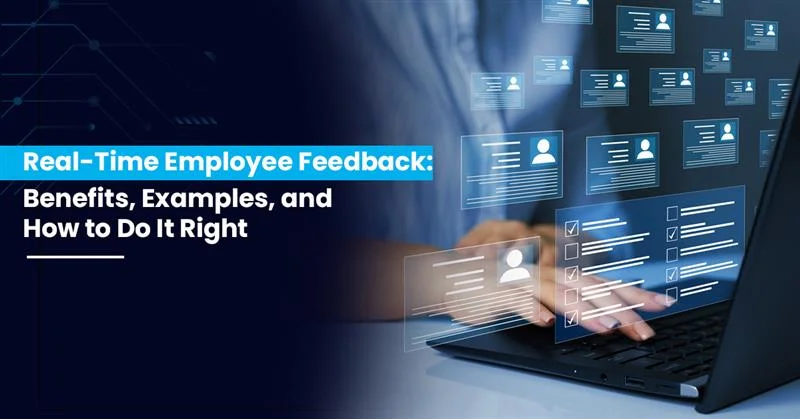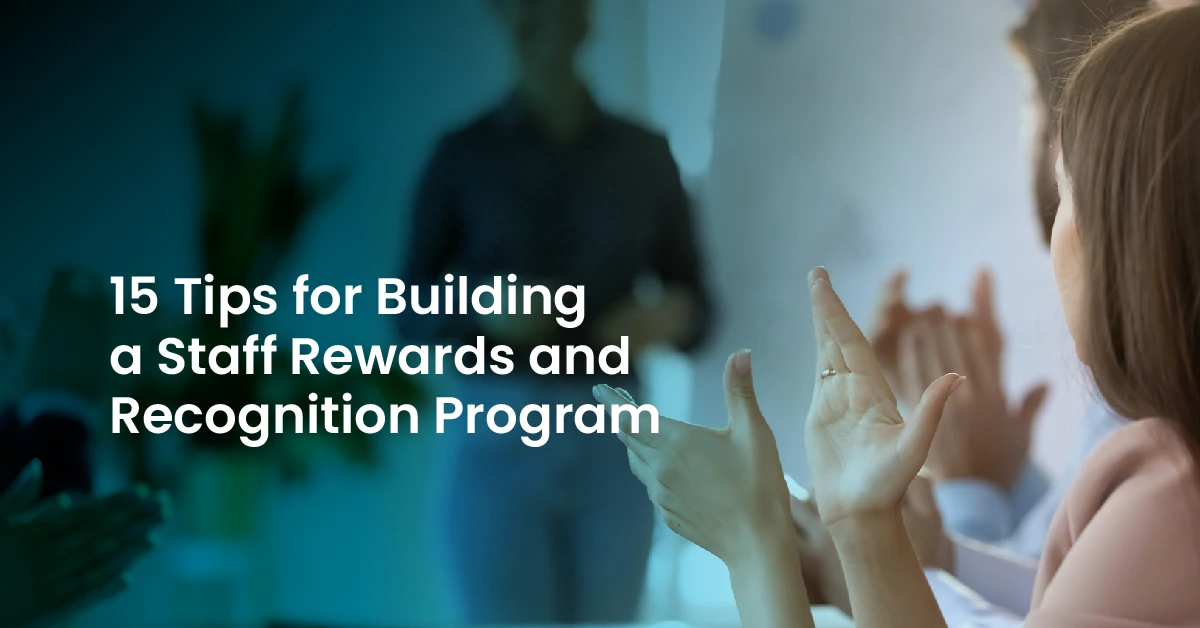Employee Feedback is the backbone of performance and engagement, yet too many companies still rely on outdated annual reviews. This delay leaves employees guessing about their performance, repeating the same mistakes, or missing opportunities to grow.
With only 31% of employees engaged in their work according to Gallup data, organizations can’t afford the disconnect. Real-time employee feedback delivers immediate insights, keeps teams aligned, and ensures top talent stays motivated and productive.
What is Real-Time Employee Feedback?
Let’s cut through the corporate jargon. Real-time employee feedback is simply giving people immediate, relevant insights about their performance when it matters—not six months later when everyone has forgotten what happened.
Understanding Continuous Employee Feedback Systems
Traditional employee feedback follows the “annual check-up” model. You know that awkward hour-long meeting where managers try to remember what you did in February while you sit there wondering why this couldn’t have been an email.
Continuous employee feedback flips this script entirely. Instead of saving up observations for one big conversation, managers and peers share insights as situations unfold. It’s like switching from sending letters to texting; the speed and relevance make all the difference.
Why Traditional Feedback Methods Fall Short
Annual performance reviews were designed for a different era; when employees stayed at companies for decades and job roles rarely changed. Today’s dynamic workplace demands a more agile approach.
The biggest problem? Timing. By the time annual reviews roll around, the context has vanished. Employees can’t remember specific situations, and managers struggle to provide actionable insights about events that happened months ago.
What Are the Key Benefits of Employee Feedback?
The impact of timely employee feedback extends far beyond individual conversations. When done right, it transforms entire organizational cultures.
Immediate Performance Improvement
Here’s where employee feedback examples really shine. Instead of watching a team member struggle for months, imagine catching performance gaps within days or even hours.
Take the case of remote sales teams. Instead of watching a team member struggle for months, imagine catching performance gaps within days or even hours.
When sales reps get immediate insights about their pitch approach or objection handling, they can adjust their strategy for the very next call.
Research shows that employees who receive meaningful feedback weekly are more likely to be fully engaged in their work compared to those who receive feedback less frequently.
Enhanced Employee Engagement and Motivation
Customer feedback creates a powerful ripple effect. When positive customer comments reach employees immediately, it creates an instant motivation boost. Hotels that share guest compliments with housekeeping staff in real-time see higher job satisfaction scores than those that don’t.
But here’s what many companies miss: negative feedback, when delivered constructively and quickly, can be just as motivating. Employees appreciate knowing about issues while they can still fix them, rather than discovering problems during their next performance review.
Better Communication and Trust Building
Real-time employee feedback creates psychological safety. When people know they’ll hear about both successes and areas for improvement as they happen, it eliminates the anxiety of wondering “how am I really doing?”
This transparency builds trust between managers and team members. Most employees want feedback on a daily or weekly basis, with younger workers preferring this frequency even more.
What Are Some Examples of Live Feedback in Workplace?
Let’s dive into practical employee feedback examples that companies are using right now to transform their workplace dynamics.
Digital Employee Feedback Examples
Modern teams are getting creative with technology. Slack channels dedicated to peer recognition allow team members to celebrate wins instantly. One marketing agency created a “#wins-wednesday” channel where colleagues share specific examples of great work they’ve witnessed.
Project management tools like Asana and Monday.com now include feedback features that let managers leave quick notes on completed tasks. Instead of waiting for meetings, feedback happens in the natural flow of work.
Mobile apps are game changers for field teams. Construction companies use apps that allow foremen to send immediate safety feedback or quality observations to workers’ phones. The result? Fewer repeat safety incidents and faster skill development.
Face-to-Face Feedback Mechanisms
Don’t underestimate the power of human connection. Walking meetings combine exercise with feedback delivery, creating a relaxed atmosphere for deeper conversations.
Daily standup meetings, when done well, include micro-feedback moments. Instead of just reporting what everyone did yesterday, team members share quick observations about what worked well and what could improve.
The “feedback sandwich” gets a modern twist with spontaneous recognition moments. Smart managers carry small notebooks to jot down specific examples of great work, then share these observations within 24 hours while the context is fresh.
Customer-to-Employee Feedback Integration
This is what are some examples of live feedback in workplace at its finest. Restaurants using tablet systems at tables can immediately share positive customer comments with specific servers. When a guest compliments the service, the server knows within minutes.
Social media monitoring tools alert customer service teams to positive mentions in real-time. When someone tweets about excellent support, the representative who handled the case gets instant recognition from their manager.
Call centers display live customer satisfaction scores on dashboards visible to all agents. This creates healthy competition while allowing supervisors to provide immediate coaching when scores dip.
How Can Organizations Implement Effective Employee Feedback Systems?
Building a culture of continuous employee feedback requires more than good intentions; it needs strategy, tools, and buy-in from every level.
What Organizations Do Right with Employee Feedback
Google’s approach focuses on peer feedback rather than top-down reviews. Their GRAD (Googler Reviews and Development) system encourages horizontal feedback sharing, recognizing that colleagues often have the best insights into each other’s work.
Microsoft shifted from annual rankings to ongoing conversations. Managers receive training on giving feedback in the moment rather than saving up observations for formal reviews.
Adobe eliminated performance ratings, focusing instead on frequent check-ins between managers and employees. This change led to reduced voluntary turnover and higher employee satisfaction scores.
Anonymous Employee Feedback Solutions
Sometimes the most valuable insights come from people who feel safe speaking honestly. Anonymous feedback platforms help organizations uncover issues that might never surface in direct conversations.
Smart companies use anonymous feedback strategically; not as a replacement for direct communication, but as a supplement that reveals blind spots. Companies that actively seek anonymous feedback and act on it achieve higher engagement rates compared to those that don’t.
The key is closing the feedback loop. When employees share anonymous concerns, leadership must communicate what actions they’re taking, even if they can’t address every individual comment directly.
Training Managers for Better Feedback Delivery
Here’s an uncomfortable truth: most managers never learned how to give effective feedback. They wing it, avoid difficult conversations, or default to generic praise that doesn’t help anyone improve.
Training programs that work focus on specific scenarios rather than theoretical concepts. Role-playing exercises help managers practice delivering both positive recognition and constructive criticism.
The best feedback training teaches managers to be specific, timely, and actionable. Instead of saying “good job on the presentation,” trained managers learn to say “your opening story about the customer challenge immediately got everyone’s attention—that technique really works.”
What Do Companies Get Wrong About Employee Feedback?
Even well-intentioned organizations stumble when implementing feedback systems. Understanding common pitfalls helps avoid expensive mistakes.
Common Mistakes in Large Organizations
The biggest error? Over-engineering the process. Some companies create such complex feedback systems that managers spend more time documenting conversations than having them.
Another mistake is treating all employees identically. High performers often want different feedback frequency and style than struggling team members. One-size-fits-all approaches miss these important nuances.
Large organizations also tend to focus on problems rather than strengths. While constructive criticism has its place, employees need to know what they’re doing well so they can do more of it.
Technology vs. Human Connection Balance
Apps and platforms can streamline feedback delivery, but they can’t replace genuine human connection. Companies that rely too heavily on automated feedback systems often see decreased employee satisfaction.
The sweet spot combines digital efficiency with personal touch. Use technology to track feedback frequency and identify patterns, but deliver the actual conversations in person whenever possible.
What Are the Benefits of Employee Feedback Software?
When chosen wisely, feedback software amplifies human capabilities rather than replacing them.
Automation and Scalability
Employee feedback software handles the administrative burden of tracking who needs feedback and when. Instead of managers juggling spreadsheets and calendar reminders, systems can automatically prompt feedback conversations based on project milestones or time intervals.
Analytics features identify trends across teams and departments. If multiple employees struggle with the same skill, it might indicate a training gap rather than individual performance issues.
Measuring Feedback Effectiveness
The best feedback software tracks outcomes, not just activity. Instead of simply counting how many feedback conversations happened, advanced platforms measure correlation between feedback frequency and performance improvements.
ROI tracking helps justify investment in feedback systems. Companies can quantify the relationship between feedback initiatives and metrics like retention, productivity, and employee satisfaction.
Transform Your Workplace with Team GPS
The challenges of implementing effective real-time employee feedback systems require the right combination of strategy, training, and cultural change. From overcoming manager hesitation to creating scalable feedback processes, most organizations struggle to bridge the gap between good intentions and consistent execution.
Team GPS, an employee feedback software provides the comprehensive framework your organization needs to revolutionize its employee feedback culture. Our proven methodologies address every challenge outlined above—from anonymous feedback systems that drive change to manager training programs that build confidence and competence.
Don’t let poor feedback practices continue costing you top talent and engagement. The statistics are clear: companies with strong feedback cultures see higher retention, better performance, and more engaged teams.
Schedule a fee Team GPS demo today and discover how leading organizations are transforming their workplace culture through strategic feedback implementation.
FAQs (Frequently Asked Questions)
Q: What does feedback meeting mean?
A: A feedback meeting is a structured conversation between managers and employees focused on performance discussion and development planning. These can be formal quarterly reviews or informal weekly check-ins.
Q: What are some good employee feedback tips?
A: Be specific about behaviors rather than personality traits, deliver feedback within 24-48 hours of the observed behavior, balance constructive criticism with recognition, and always make feedback actionable with clear next steps.
Q: How can anonymous employee feedback be helpful?
A: Anonymous feedback encourages honest responses about sensitive workplace issues and reduces fear of retaliation. It helps leadership identify systemic problems they might otherwise miss.











